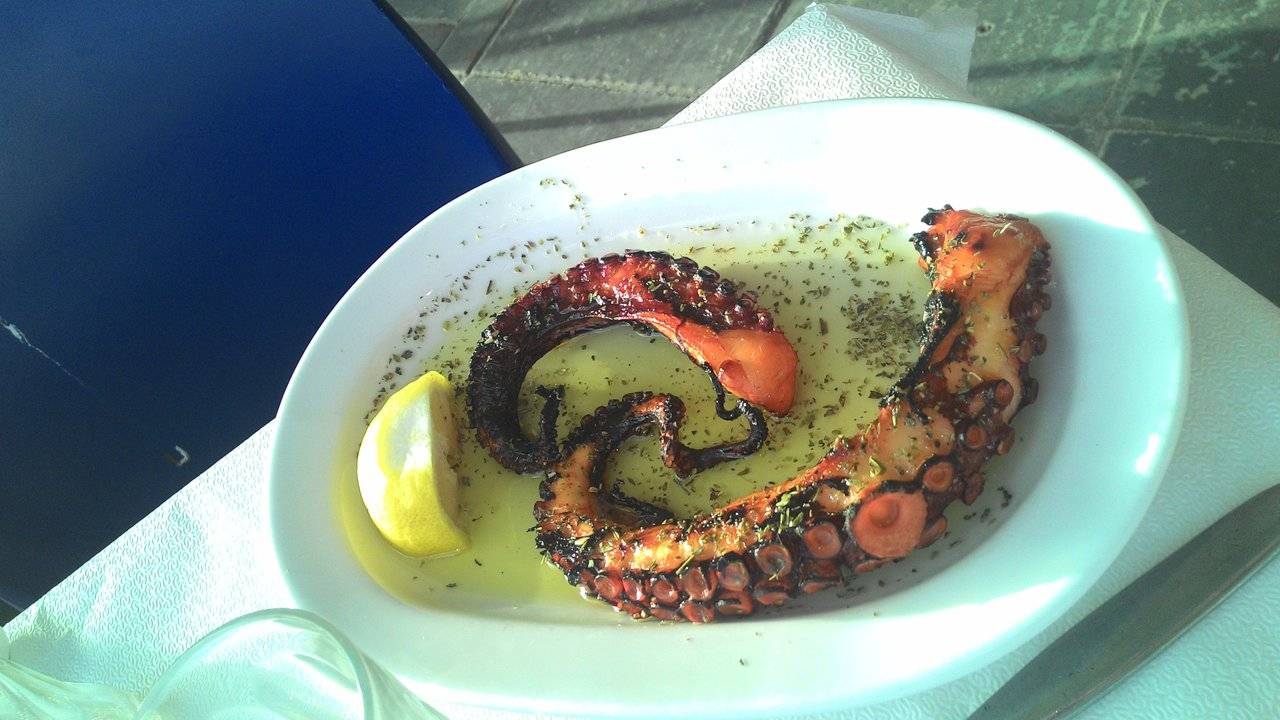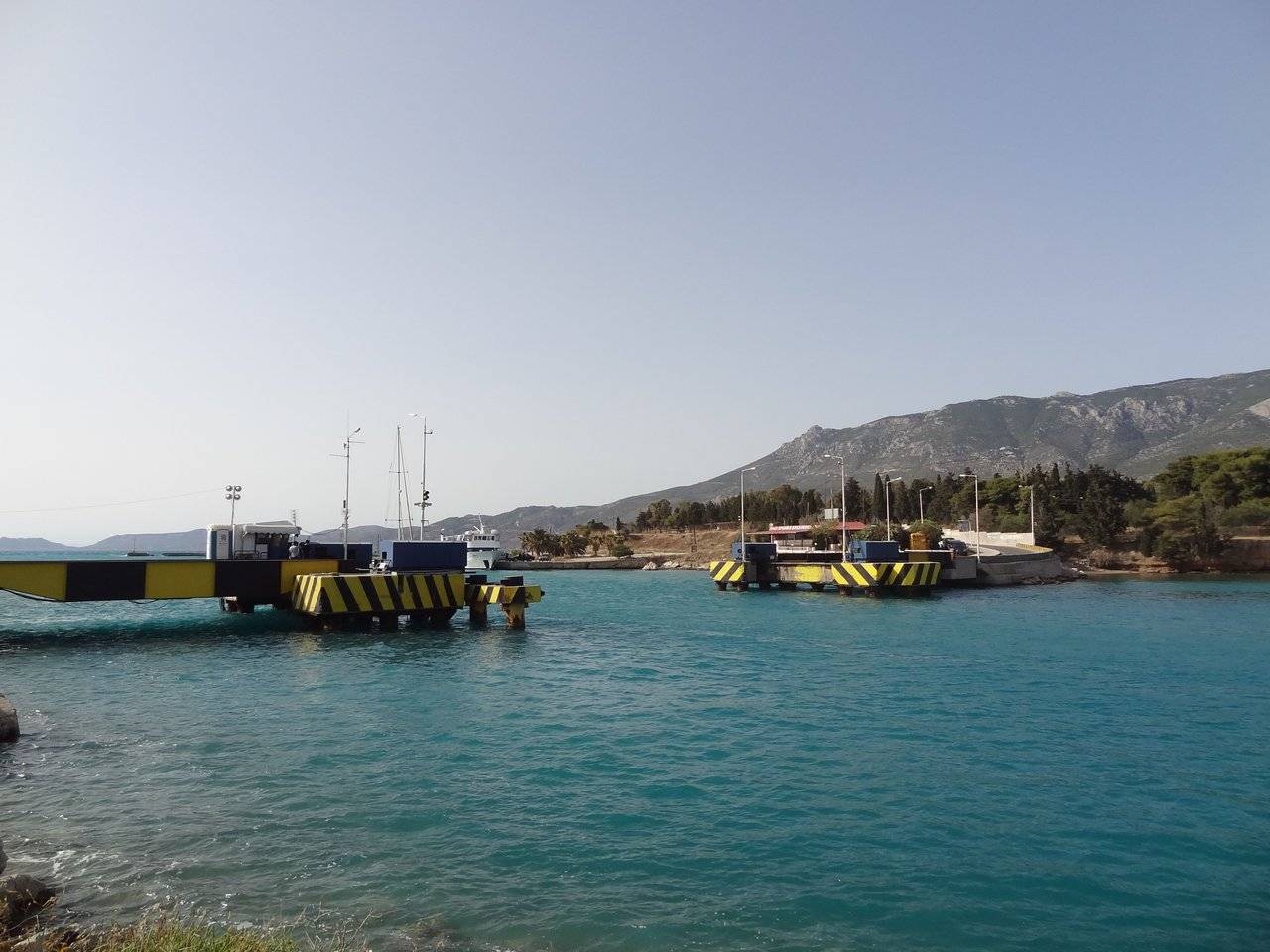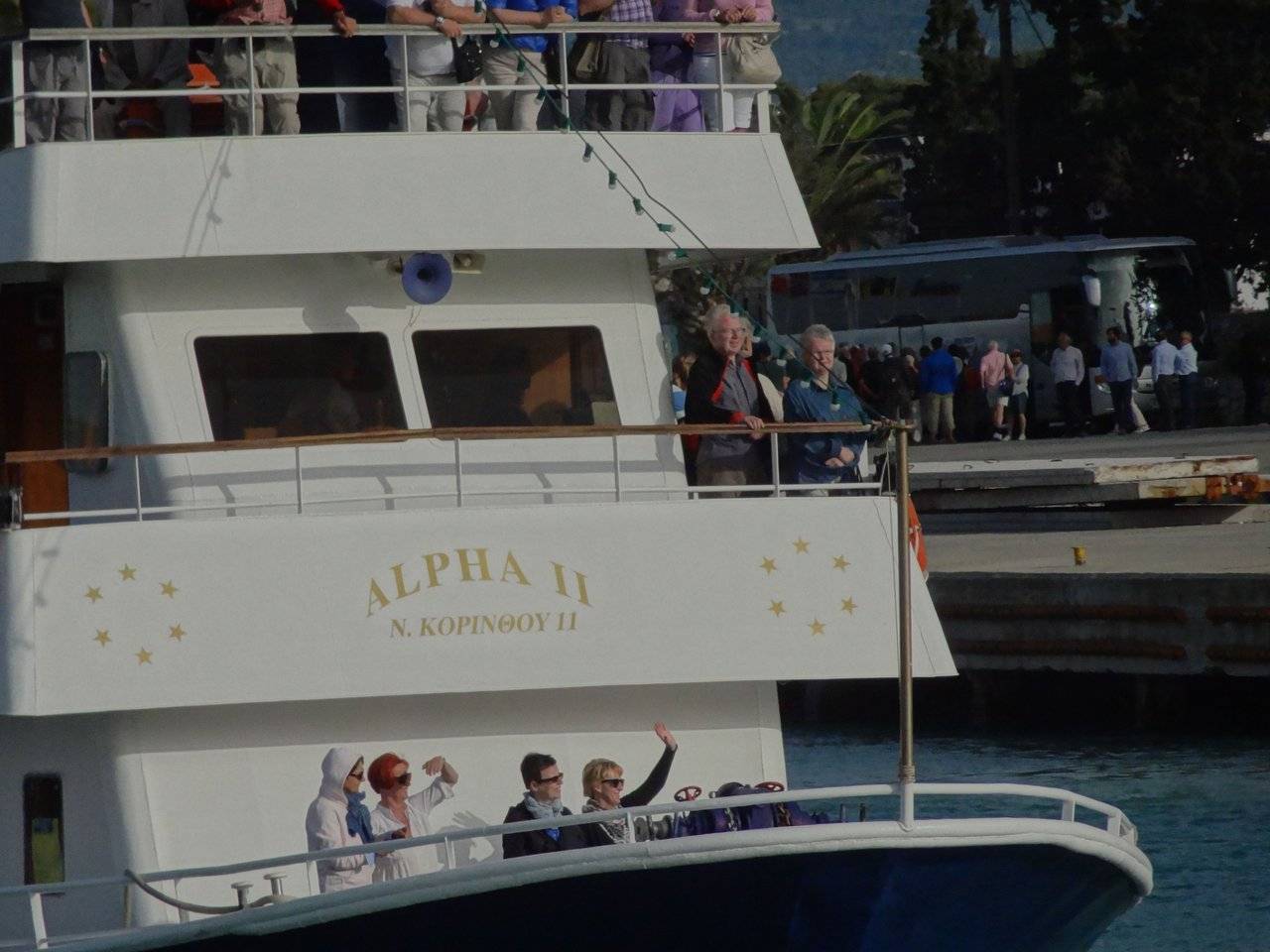The Canal of Corinth on the Peloponnese is definitely worth a trip. If someone drives from the Peloponnese to the mainlands then someone cross once the main bridge of the canal. There you can drink a frappè in one of the cafés on both sides and cross the bridge via foot, if you haveave luck you can watch the ship traffic.
For the very brave people there is the possibility for Bungee-Jumping at the bridge.
At the entrance to the canal there are tavers on the left and right side where you can sit down comfortably. With a glass Retsina and really good food there you can watch the opening and closing of the locks and watch the ship traffic.
The Canal of Corinth separates the Greek mainland from the Peloponnese peninsula. The idea of a canal from Corinth can look back on a past 2,600 years. But it was only in the 19th century with his achievements of industrialization, in particular the invention of dynamite (1866) and blasting gelatine (1876) by Alfred Nobel, that it became possible to put into practice the old wish of cutting through isthmus.
For the 6,346 m long waterway built in the years 1881 to 1893 through the isthmus of Corinth, the so-called Isthmus of Corinth , was dug at its narrowest position. Since then, the Corinth Canal has connected the Saronic Gulf with the Gulf of Corinth. In order to create this possibility of passage and thus save shipping traffic the approximately 400 km long journey around the Peloponnese, they took it upon themselves to work their way up to 84 m into the depth through rocks. This resulted in a water depth of about 8 m. The channel bed is at the level of the water level about 24.6 m wide, but narrows down to the bottom to about 21 m, while the upper clear width of the ground incision is 75 m on average. The steep walls at the channel at an angle of 71°-77° rise up to 79 m in height. Five bridges cross the canal at this altitude.
Also noteworthy are the lowerable bridges at both flat ends of the canal. When a ship approaches, these are sunk into the channel by a motor-driven rod.
In 1944 the German Wehrmacht blew up part of the steep face and all bridges across the canal. In order to hinder a later reconstruction, additional locomotives and railway carriages were thrown into the canal and mines were placed. Reconstruction began with the help of the United States Army Corps of Engineers in 1946 and was completed in November 1948; several hundred-thousand tons of debris had to be removed.
At the time of its construction, the canal provided enormous assistance for navigation because it saved the dangerous bypass of the Peloponnese around Cape Malea, but it has lost weight today.
The size of the canal allows only the passage of smaller ships; the Peloponnese are now circumnavigated on courses further off the coast; therefore it is no longer so dangerous, and the motorization of the ships minimizes the time saving.
The soft rock of the canal walls needs stabilisation, and the eastern entrance (at the Saronic Gulf) must be repaired as soon as possible. Despite the relatively considerable passage fees this straight waterway is still passed by about 30 ships daily, i.e. about 11,000 ships per year. Most of them are ferries and tourist boats.
Reference:
- Wikipedia https://de.wikipedia.org/wiki/Kanal_von_Korinth
- Kmap material from Google Maps
- Video's from YouTube
- All pictures were taken by me.
Ready to Blog & Earn?
With TravelFeed, easily start your own travel blog and earn as you go. It's the smart platform for travelers who want to profit from their passion. Create a free account
Here Ipublish everything that has to do with Greece. Pictures - Videos - Recipes - Recipes and Travel tips you can **see and read **here.
Next posts are:
Excursions:
 Dimitrios Shipwreck in Gythion - Greece Peloponnese
Dimitrios Shipwreck in Gythion - Greece Peloponnese
Don't Forget: Get Travel Health Insurance!
To make your trip a worry-free experience, TravelFeed recommends SafetyWing Nomad Insurance. It provides comprehensive health coverage while you travel, so you can focus on exploring, not the unexpected. Get a quote here
Recipes:
- Greek recipes Holly's meatballs filled with cheese)
- Greek recipes Holly's homemade Lagana bread
- Holly's Greek low-temperature casserole in the style of a Stifado
Greetings from Greece
Travel Resources
Recommended by TravelFeed
Flights: We recommend checking Kiwi.com to find the best and cheapest flights .
Accomodation: Find great stays on Booking.com, Agoda and Hostelworld.
Travel Insurance: Medical emergencies abroad can be pricey, but travel health insurance is not. We always use SafetyWing for affordable and reliable coverage.
Car Rental: For hassle-free car hiring, DiscoverCars is our trusted choice with a wide selection of vehicles.
Internet: Got an eSIM compatible phone? Airalo is perfect for reliable internet access during your trip. Just install it before you go, and you're set!
Day Trips & Tours: We recommend GetYourGuide for a variety of well-organized and enjoyable activities.
Travel Planner: Need a hand planning? Our free travel planner chatbot is your personal guide. Chat now.
Disclosure: Posts on TravelFeed may contain affiliate links. See affiliate disclosure.









